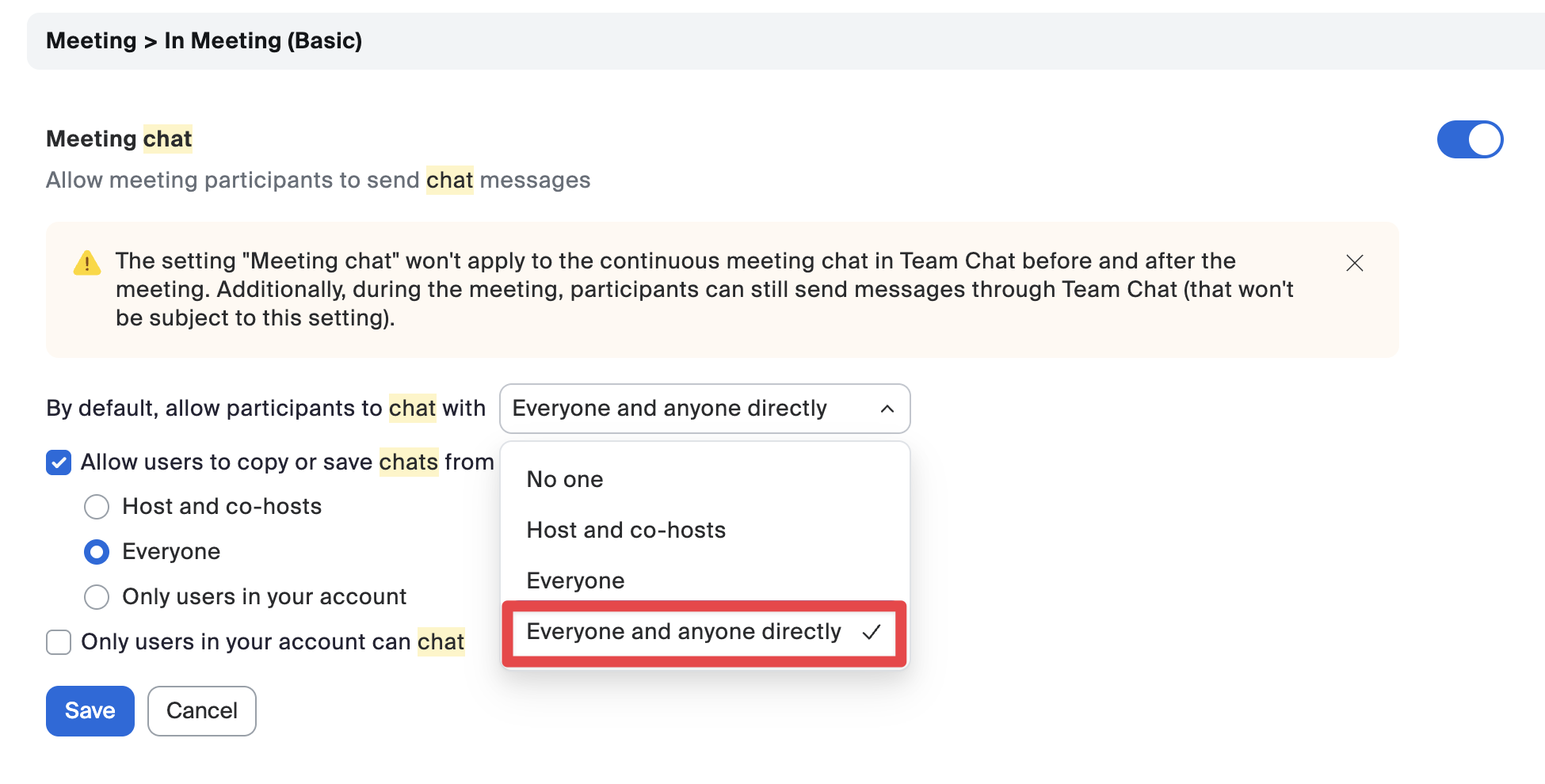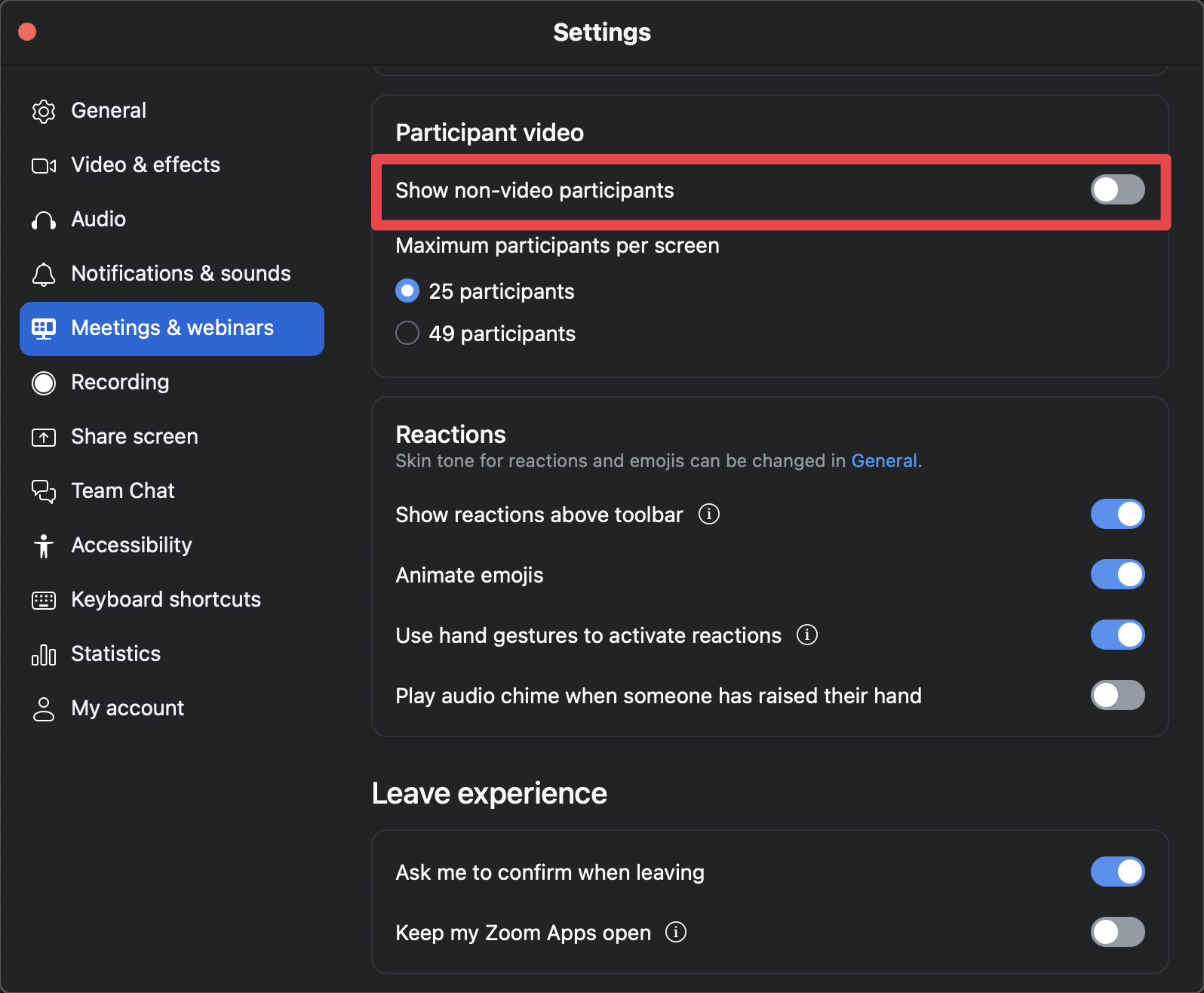Zoom FAQ
Frequently asked questions about Zoom bots.
What if Zoom returns an internal error?
On rare occasions, your bot may fail to enter a call with a zoom_internal_error sub code.
Unfortunately this means something went wrong on Zoom's end, and we have limited visibility into the underlying error. We do our best to handle these errors internally through retries but on rare occasions this error can cause a bot to fail.
If you're seeing this error recur for a certain situation or user, please let us know and we can raise the issue with Zoom.
If you get a
zoom_internal_errorwhen providing astart_urlcontaining a pre-embeddedzaktoken, if the meeting is scheduled far into the future, you will receive azoom_internal_errorwhen the bot tries to join.This is because
zaktokens are short-lived, and attempting to join a meeting with an expired token will cause Zoom to throw an error.
What happens if there is a password on the Zoom meeting?
If there is a password on the meeting, it should be embedded in the meeting URL as a query parameter by default. For example, a meeting URL with an embedded password might look like this: https://zoom.us/j/123?pwd=abc. Everything after the pwd=in the URL is the password, which the bot will use to join the call.
If the password is not in the query parameter, the bot will not be able to join the call.
Does the bot need to be let in every time?
The bot will go into the waiting room only if there is a waiting room enabled.
Think about the bot just like a normal participant. If there's a waiting room enabled, then it will go into the waiting room with other participants.
If there is no waiting room enabled, then it will skip the waiting room and join the meeting directly, just like other participants.
Why isn't my bot sending chat messages?
If the chat messages sent by your bot aren't showing up, it's likely a problem with your Zoom configuration. Please ensure that "Continuous Meeting Chat" is enabled on your Zoom account.

You should also ensure that direct messages are enabled on your Zoom account.

Why aren't DM's from my bot showing up?
You will need to make sure that the host's Zoom chat settings are set to chat with "Everyone and anyone directly" if you want the bot to be able to DM anyone in the call. If this setting is not configured, the bot will only be able to DM the host of the call.

Is there a way to hide participants (bots) that don't have their video on?
This is controlled by Zoom settings at the individual user level, and bots can't control this setting for other participants.
If an end user would like to remove the bot from their view on Zoom calls, they can disable the Show non-video participants setting under Meeting & webinars > Participant video:

Can I control who let's the bot in from the waiting room?
Only participants with the host and co-host role can let participants in from the waiting room. This is a platform-imposed limitation by Zoom
Can I customize the recording consent disclaimer per meeting?
No, the recording consent disclaimer can only be customized at the organization level on certain plans
Updated 9 days ago